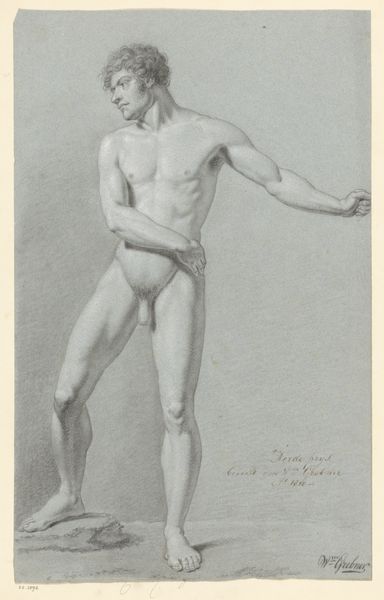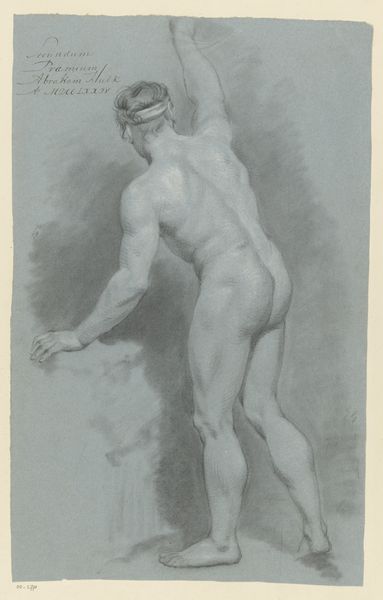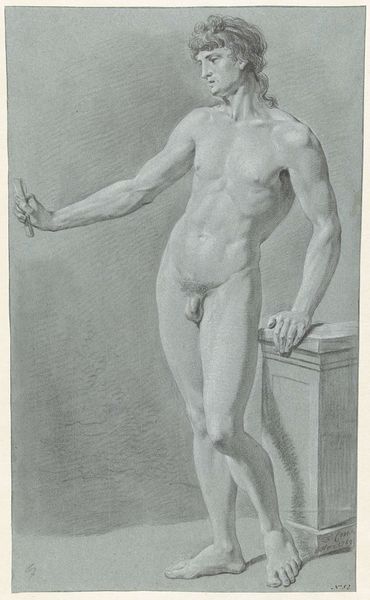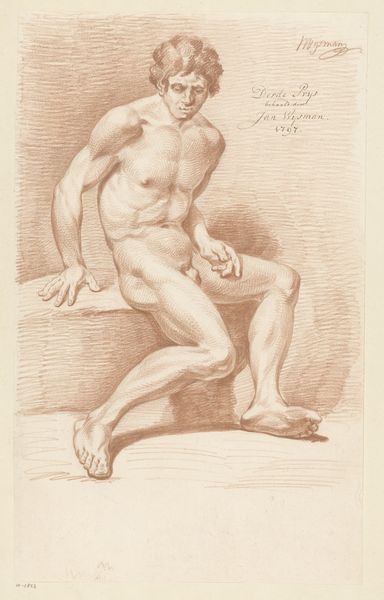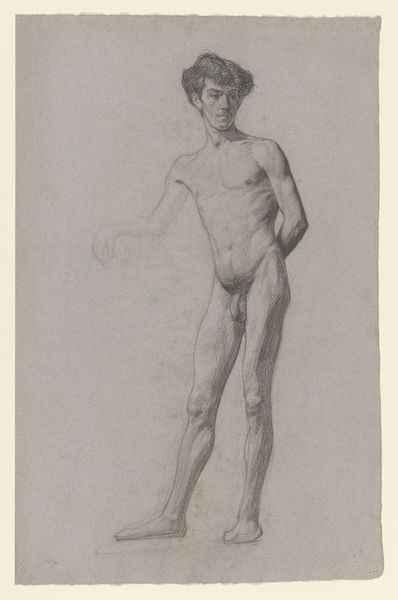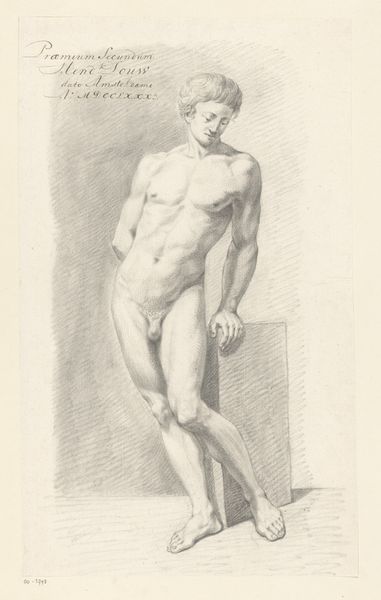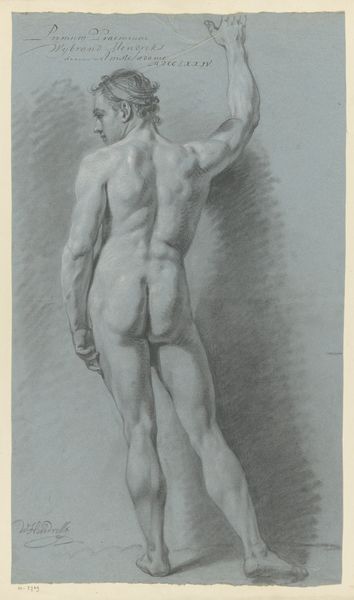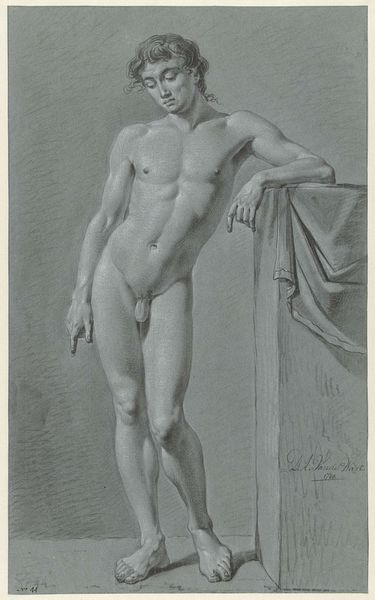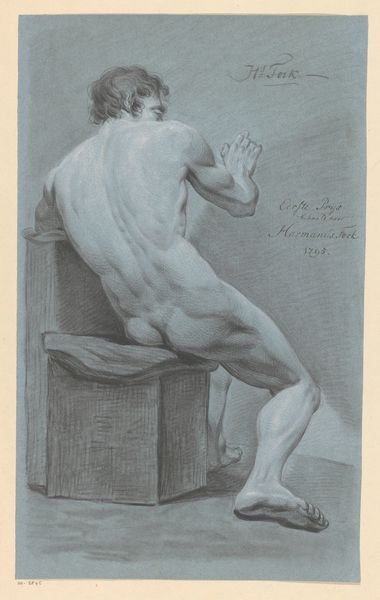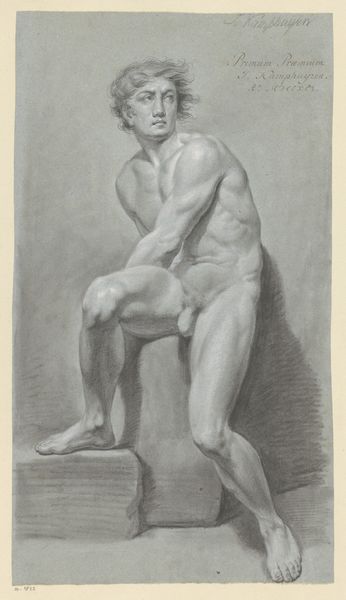
#
pencil drawn
#
light pencil work
#
pencil sketch
#
charcoal drawing
#
portrait reference
#
pencil drawing
#
portrait drawing
#
tonal art
#
portrait art
#
fine art portrait
Dimensions: height 558 mm, width 327 mm
Copyright: Rijks Museum: Open Domain
Dirk Versteegh made this chalk drawing, titled "Standing Male Nude, Front View," in 1782. The figure dominates the composition. The pale figure contrasts starkly with the blue-grey background, which is typical of academic drawings from this period. The shading is very subtle, almost imperceptible. At first glance, this appears to be a standard academic nude. However, Versteegh destabilizes this classical form through the figure's pose. Note the way he leans casually against a cube, almost slouching. His legs are crossed, and his gaze drifts off to the left. This informality introduces a sense of uncertainty, challenging the traditional, idealized representation of the male form. The traditional nude would be strong and forward facing. Here, it's as if Versteegh is questioning those norms, creating tension between the ideal and the real. The drawing is not just an exercise in form but a statement about changing perceptions of the body and representation itself. This approach asks us to reconsider what it means to depict the human form and what values are embedded in that depiction.
Comments
No comments
Be the first to comment and join the conversation on the ultimate creative platform.
